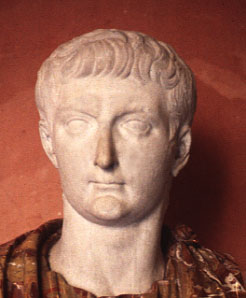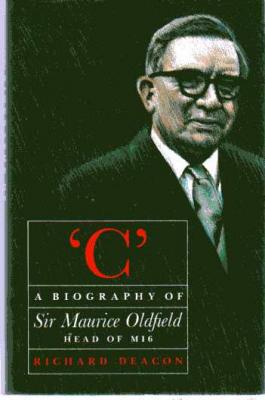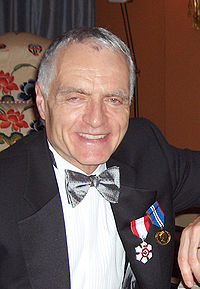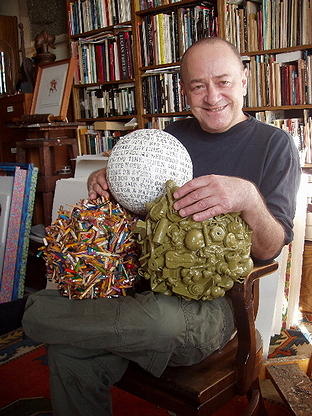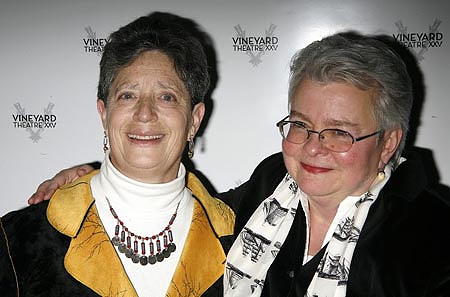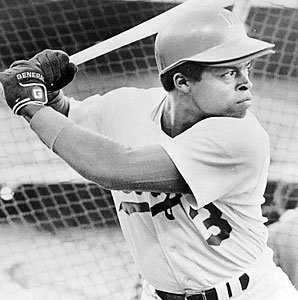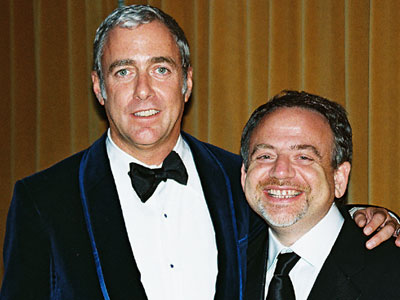|
presents THIS DAY IN GAY HISTORY based on: The White Crane Institute's 'Gay Wisdom', Gay Birthdays, Gay For Today, Famous GLBT, glbt-Gay Encylopedia, Today in Gay History, Wikipedia, and more …
Collected by Ted November 16 [{(o)}]|[{(o)}]|[{(o)}]|[{(o)}]| [{(o)}]|[{(o)}]
42 BC – Tiberius, Roman emperor, born (d.37 AD); second Roman Emperor, from the death of Augustus in CE 14 until his own death in 37 AD. Tiberius was by birth a Claudian, son of Tiberius Claudius Nero and Livia Drusilla. His mother divorced his father and was remarried to Octavian Augustus in 39 BC. Tiberius would later marry Augustus' daughter Julia the Elder (from an earlier marriage) and even later be adopted by Augustus and by this act he became a Julian. The subsequent emperors after Tiberius would continue this blended dynasty of both families for the next forty years; historians have named it the Julio-Claudian dynasty. Tiberius was the predecessor to Caligula and he was certainly the appropriate curtain-raiser. His sexual excesses were widely known, especially when he "retired" to Capri, governing Rome via correspondence, and becoming the patron saint of that future gay mecca. Suetonius reported that Tiberius trained young boys, whom he called his "minnows," to stay between his legs while he was swimming so they could lick and nibble him until he came. Suetonius reports that Tiberius can be credited with the "daisy chain" or spintriae - a conga line of people joined front and back in sexual congress.
1502 – Sandro Botticelli (c.1445- 1510) is accused of sodomy but the charges were dropped. The summary of the charge reads: "Botticelli keeps a boy." Botticelli was an Italian painter of the Early Renaissance. He belonged to the Florentine School under the patronage of Lorenzo de Medici. Botticelli’s posthumous reputation suffered until the late 19th century; since then, his work has been seen to represent the linear grace of Early Renaissance painting.
1915 – Sir Maurice Oldfield GCMG, CBE (d.1981), was a British intelligence officer and espionage administrator. The Second World War upset his plans for an academic career. Oldfield joined up and became a sergeant in Field Security in Egypt, Palestine and Syria, was commissioned in 1943 and posted into the Intelligence Corps; his service was spent mostly at the Cairo headquarters of SIME (Security Intelligence, Middle East) where his talent was spotted. Oldfield finished the war as a lieutenant colonel with an MBE. Immediately after the war Roberts was made the head of counter-intelligence in the Secret Intelligence Service (SIS), more commonly known as MI6. Following a short spell in London from 1958 to 1959, Oldfield was selected for the key post of SIS representative in Washington, where he remained for the next four years, with the main task of cultivating good relations with the Central Intelligence Agency (CIA). On his return to London, Oldfield became director of counter-intelligence and in 1965 deputy to C (nom-de-guerre for the head of MI6). He therefore had reason to feel aggrieved when he was passed over in 1968 in favour of Sir John Rennie from the Foreign and Commonwealth Office, whom he later succeeded as C in 1973. Oldfield was appointed KCMG in 1975 and GCMG on his retirement in 1978: the only C so far to have received this award. All Souls College made Oldfield a visiting fellow in 1978, where he began a study of Captain Sir Mansfield Cumming, the first C, but soon lost interest in it through lack of material. He therefore welcomed Margaret Thatcher's proposal in October 1979 to appoint him co-ordinator of security intelligence in Northern Ireland. In Belfast he did his best to improve relations between the chief constable and the new general officer commanding, but the strains of office soon told on him. It was not only incipient cancer, but also alleged evidence on his unprofessional contacts that caused his return to London in June 1980. Subsequent interrogation resulted in the withdrawal of his positive vetting certificate, after he confessed he had lied to cover up his homosexuality. In 1987, Thatcher confirmed to the House of Commons that Oldfield was gay. Oldfield himself had previously admitted that "from time to time [he] engaged in homosexual activities." Former colleagues in MI6 denied this, and there is no evidence that his private life had prejudiced the security of his work at any stage in his career. He was reputedly one of the models for John le Carré's fictional character George Smiley, though Le Carré disputes this.
During the 1980s he undertook research as Principal Investigator for the "Refugee Resettlement Project", a ten-year study of the health and experiences of the "Boat People", immigrants from Southeast Asia to Canada. In 1986, he was appointed chair of a federal government task force on the issue, and in 1988 authored the final report of the committee, After the Door Has Been Opened. He has authored more than 150 scientific research papers, a book about the Boat People entitled Strangers at the Gate, and is co-editor of the forthcoming Immigration, Ethnicity, and Health. He also conceived and produced a radio program on immigration in Canada which was aired from 1999 to 2000 in Ontario and Alberta, as well as a version for Canadian students, Strangers Becoming Us, to be used in the classroom. Strangers Becoming Us is still in use in all public elementary and high schools in Canada He lives in Toronto, Canada, and in Grignan, France, with his husband, author J. Timothy Hunt. He has five sons: David Beiser, director of the International Grants Program, AYUSA Global Youth Exchange; award-winning journalist Vince Beiser; film and television actor Brendan Beiser and twins Daniel and Rowan Beiser.
1938 – The Montana Supreme Court overturns a 35-year sentence for sodomy conviction based on the fact that a young man and his alleged lover live near each other (and move to stay close when the other moves), hang around together, and are found by police sleeping in the same bedroom—in separate beds. The Court warns of the dangers of basing convictions on such circumstantial evidence. The defendant, Alexander Keckonen, was a former Marine who had served in China during the 1920s. In the town of Missoula, he had been very close to a teenage male and also moved when the younger man’s family moved. When reported missing once, the teenager was found by police sleeping in the same room as Keckonen, but in a different bed.The 3-2 majority of the Court felt that there was little doubt to the claim of prejudice made in the appeal. Crimes against nature are naturally revolting to a normal person, the judges agreed, and the subject is truly a loathsome one to many. In such cases, jurors are sometimes moved to convict upon slight evidence by their abhorrence of the offense itself rather than the facts.
1942 – Barton Lidice Beneš, born in Hackensack, New Jersey (d.2012), was an artist who lived and worked in New York City. He studied at Pratt Institute, Brooklyn, New York and Beaux-Arts, Avignon, France. His father, the son of Czech immigrants gave him his middle name in memory of Lidice, the Czech town destroyed by the Nazis that year. He grew up in Queens with Czech-born grandparents, who instilled in him a dedication to the Roman Catholic traditions of reliquaries and memorials to the dead. Barton Beneš' art incorporated shadow boxes filled with bits and pieces that revealed the myths and ironies of life. The fragments in Beneš' work often involved famous people and events, from a piece of Elizabeth Taylor's shoe to a crumb from the wedding cake of the Prince of Wales. His travelling exhibition series about AIDS, "Lethal Weapons," was the focus of an independent documentary film released in 1997. "Lethal Weapons" consisted of 30 vessels such as a water pistol, an atomizer, and hollow darts, all filled with the artist's or other people's HIV-infected blood. Another work, "Brenda," was a wall relief carpeted with red AIDS-awareness ribbons and slathered with a coat of gray paste made from the cremated remains of a woman who had died of AIDS. "I absolutely hate those [AIDS] ribbons," he said, contending that wearing them did nothing more than assuage people's consciences. Although galleries and museums refused to show this work, they were displayed without incident at the North Dakota Museum of Art in 1993. Beneš did not forget the courage and commitment to art of this prairie institution. When he died he left instructions to be cremated and have his remains placed in a pillowcase on his bed. The bed was the central part Beneš last completed and most personal work, his 850-square-foot home in Greenwich Village containing thousands of objects including masks and religious relics and the mementoes and remains of his loved ones. This enormous piece with its thousands of contents will be moved to Grand Forks, North Dakota, where they will be exhibited in a replica of the apartment Among the museums that have acquired his works are the Chicago Art Institute, the National Museum of American Art, the National Gallery of Australia, and most importantly the North Dakota Museum of Art.
1951 – Paula Vogel is an American playwright and university professor. She received the 1998 Pulitzer Prize for Drama for her play, How I Learned to Drive. Born in Washington, D. C., Paula Vogel grew up in the Maryland suburbs of the city. Her parents divorced when she was eleven. Vogel and her older brother Carl remained with their mother while the eldest sibling, Mark, lived with their father, who remarried. It was Vogel's brother Carl who became her protector and guide after their parents' divorce. Only thirteen years old at the time, he declared, "I'm her father," and proceeded to encourage her to do well in school so that she could attend college. Wth her brother's support, she won a scholarship to Bryn Mawr. Vogel's brother Carl also went to college and graduate school. During his student days he became a gay activist, for which he paid a heavy price: he was beaten up; some faculty members shunned him; and his apartment was broken into and ransacked. Carl Vogel fell ill with AIDS in the late 1980s, and the family rallied around him. Paula Vogel was impressed with the "incredible generosity" of their brother Mark, who was accepting of the homosexuality of both of his siblings. Their father also showed a positive attitude. For their mother it was more difficult to come to terms with her children's sexual orientation, but eventually, said Vogel, she "came to a point where she was personally proud." Carl Vogel died in 1988. In his memory, his father founded an HIV/AIDS counseling and treatment facility, the Carl Vogel Center, in Washington, D. C. Paula Vogel commemorated her brother with a play, The Baltimore Waltz (written in 1989, first produced in 1992). In the play, Anna, a young woman in Baltimore, thinks that she has contracted a fatal disease that, because it generally afflicts a largely marginalized group, is receiving little attention and research. Her brother Carl takes her on an imaginary trip to Europe to try to save her. It is he, however, who is actually dying of AIDS. Upon his death, Anna dances the Baltimore Waltz with him. She is best known for her Pulitzer Prize-winning play How I Learned to Drive (1997), which examines the impact and echoes of child sexual abuse and incest. Other notable plays include Desdemona, A Play About A Handkerchief (1979); The Oldest Profession (1981); And Baby Makes Seven (1984); Hot 'N Throbbing (1994); and The Mineola Twins (1996). On September 26, 2004 Vogel married her long-time partner, Anne Fausto-Sterling, in Truro, Massachusetts. Fausto-Sterling, the author of Sexing the Body: Gender Politics and the Construction of Sexuality (2000), is a Professor of biology and gender studies at Brown. In an interview a month after the wedding Vogel stated,
1952 – Glenn Burke (d.1995) was a Major League Baseball player for the Los Angeles Dodgers and Oakland Athletics from 1976 to 1979. Burke was the first and only Major League Baseball player known to have been out to his teammates and team owners during his professional career. He was the first to publicly acknowledge his homosexuality. He died from AIDS-related causes in 1995. "They can't ever say now that a gay man can't play in the majors, because I'm a gay man and I made it." - Glenn Burke Glenn was an accomplished high school basketball star, leading the Berkeley High School, California "Yellow Jackets" to an undefeated season and the 1970 Northern California championships. He was considered capable of being a professional basketball player, but his first offer came from Major League Baseball. Burke's association with the Los Angeles Dodgers was a difficult one. According to his 1995 autobiography Out at Home, Los Angeles Dodgers General Manager Al Campanis offered to pay for a lavish honeymoon if Burke agreed to get married. Burke refused to participate in the sham. He also angered Dodger manager Tommy Lasorda by befriending the manager's estranged gay son, Tommy Lasorda, Jr. The Dodgers eventually dealt Burke to the Oakland Athletics for Billy North. There, Billy Martin called him faggot in front of his teammates. After he suffered a knee injury before the season began, the A's sent him to the minors in Utah. The A's released him from his contract in 1979. Burke said "By 1978 I think everybody knew," and was "sure his teammates didn't care." Former Dodgers team captain Davey Lopes said "No one cared about his lifestyle." However, Burke told the New York Times that "Prejudice drove me out of baseball sooner than I should have. But I wasn't changing.", and stated in his autobiography that "prejudice just won out." Burke left professional sports for good at age 27. "My mission as a gay ballplayer was to break a stereotype . . . I think it worked." Glenn Burke in People ~ November 1994 In 1977, Burke ran onto the field to congratulate his Los Angeles Dodgers teammate Dusty Baker after hitting his thirtieth home run in the last game of the regular season by raising his hand over his head as Baker jogged home from third base. Not knowing what to do about the upraised hand, Baker slapped it, thus the two together invented the high five. Burke continued his athletic endeavors after retiring from baseball. He competed in the 1986 Gay Games in basketball, and won medals in the 100 and 200 meter sprints in the first Gay Games in 1982. Burke's homosexuality became public knowledge in a 1982 article published by "Inside Sports" magazine. Although he remained active in amateur competition, Burke turned to drugs to fill the void in his life when his career ended. An addiction to cocaine destroyed him both physically and financially. In 1987, his leg and foot were crushed when he was hit by a car in San Francisco. After the accident his life went into physical and financial decline. He was arrested and jailed for drugs and for a time was homeless on the streets of San Francisco for a number of years, often congregating in the same neighborhood that once embraced him. His final months were spent with his sister in Oakland. He died of AIDS complications at age 42 in 1995. When news of his battle with AIDS became public knowledge in 1994, he received the support of his former teammates and the Oakland Athletics organization. In interviews given while he was fighting AIDS, he expressed little in the way of grudges, and only one big regret - that he never had the opportunity to pursue a second professional sports career in basketball.
1955 – Born: Lyricist and director Scott Wittman, who, with composer Marc Shaiman, his partner in life and collaborator in theater, film, and television projects, has a long list of credits in the entertainment industry. Their work on the musical version of John Waters' Hairspray earned Tony and Grammy awards in 2003. Both Shaiman and Wittman grew up in the vicinity of New York City, the former in Scotch Plains, New Jersey, and the latter in Nyack, New York. Both were fascinated with musical theater from an early age and dreamed of careers on Broadway. Shaiman played piano with local community theater groups from the time that he was twelve, and Wittman apprenticed in summer stock in his hometown. Such was their love for the stage that they both cut high school classes to travel into New York for matinees. Wittman attended Emerson College in Boston but left after two years to pursue a career as a writer and director in musical theater in New York. In the city's East Village he crossed paths with Shaiman, who had quit high school at sixteen to join the New York musical scene. Wittman was directing a show at a club in Greenwich Village when Shaiman came in and started playing the piano. Wittman promptly hired him. They subsequently fell in love and have been a couple since 1979. The two soon began collaborating professionally, writing songs that Shaiman describes as "full of anarchy and joy." Since 1997 Shaiman and Wittman have contributed and directed music for the Academy Awards presentation show. At the same time Wittman, who humorously calls himself "a great diva wrangler," has directed concerts. In addition to working with Bette Midler, he has had a long association with Patti LuPone and has worked with Christine Ebersole, Raquel Welch, Dame Edna Everage (Barry Humphries), and Lypsinka among many others. Shaiman and Wittman's greatest triumph thus far is Hairspray, an adaptation of the 1988 John Waters movie for the musical stage. Shaiman and Wittman wrote the music, and Mark O'Donnell and Thomas Meehan the book for the play. 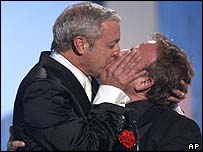 The show dominated the 2003 Tony Awards, winning eight, including best musical and best score. At the end of their acceptance speeches Shaiman declared to Wittman, "I love you, and I'd like to spend the rest of my life with you." The couple then embraced and shared a long and tender kiss. News outlets around the world took note of this affecting moment.
1964 – Waheed Alli, Baron Alli is a British multimillionaire media entrepreneur and politician. He was co-founder and managing director of Planet 24, a TV production company, and managing director at Carlton Television Productions. He was, until November 2012, chairman of ASOS.com. He is the chairman of Silvergate Media, which purchased two of the media rights previously held by Chorion Ltd, where Alli was former chairman. He is a Labour life peer and is described as one of only a few openly gay Muslim politicians in the world. In British political terms he is considered Asian, though both of his parents are from the Caribbean. His mother, a nurse, is from Trinidad, and his estranged father, a mechanic, is from British Guiana (now Guyana). His mother was Hindu and his father Muslim; he has two brothers, one of each faith. He was named one of the 20 most important Asians in British media in 2005. At the same time, he maintains ties with his Caribbean roots, both with other British-Guyanese politicians such as Valerie Amos and Trevor Phillips, and with President Bharrat Jagdeo. Alli joined the Labour Party at the persuasion of his neighbour Emily Thornberry, to whom he remains close. He is also close to Anji Hunter, Director of Government Relations in Tony Blair's first government. Prime Minister Blair used him for years as a means to help him reach out to a younger generation (aka "yoof culture"), and as such he is considered one of "Tony's Cronies". He was made a life peer as Baron Alli, of Norbury in the London Borough of Croydon, on 18 July 1998 at the age of 34, becoming the youngest and the first openly gay peer in Parliament. He sits on the Labour benches in the House of Lords. The BBC summarised his appointment as "the antithesis of the stereotypical 'establishment' peer – young, Asian and from the world of media and entertainment". Alli has used his political position to argue for gay rights. He spearheaded the campaign to repeal Section 28. He advocated lowering the age of consent for homosexuals from 18 to 16, equal to heterosexuals; this eventually became law as the Sexual Offences (Amendment) Act 2000. It was during a heated exchange with conservative opponents, led by Baroness Young, that he informed his fellow peers that he was gay. In April 1999, he said in a speech, "I have never been confused about my sexuality. I have been confused about the way I am treated as a result of it. The only confusion lies in the prejudice shown, some of it tonight [i.e. in the House], and much of it enshrined in the law." In 2009, he spearheaded an effort to repeal clauses in the Civil Partnership Act 2004 which prohibited religious institutions from conducting the ceremonies on their premises. This campaign culminated in a bipartisan amendment, which became part of the Equality Act 2010.
1984 – The West German government announced it would attempt to pass legislation making it a crime for a person with AIDS to have sex.
1989 – The Center for Homosexual Lifestyles was established in Berlin. It was the first time in Germany that a public office was established specifically to deal with the concerns of lesbians and gay men.
1999 – The Rhode Island Supreme Court rules that all pending consensual sodomy prosecutions at the time of the 1998 legislative repeal must be abandoned.
[{(o)}]|[{(o)}]|[{(o)}]|[{(o)}]| [{(o)}]|[{(o)}] |
